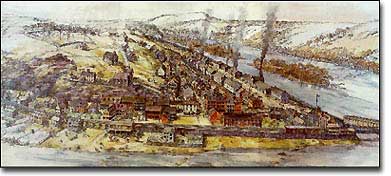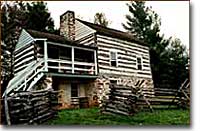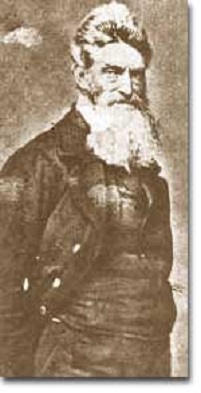Raid on Harpers Ferry Easy to Draw

32c. John Brown's Raid

Harper's Ferry before John Brown's raid on October 16, 1859.
On October 16, 1859, John Brown led a small army of 18 men into the small town of Harper's Ferry, Virginia. His plan was to instigate a major slave rebellion in the South. He would seize the arms and ammunition in the federal arsenal, arm slaves in the area and move south along the Appalachian Mountains, attracting slaves to his cause. He had no rations. He had no escape route. His plan was doomed from the very beginning. But it did succeed to deepen the divide between the North and South.

John Brown and his men stayed in this rented farmhouse in the days before the raid on Harper's Ferry.
John Brown and his cohorts marched into an unsuspecting Harper's Ferry and seized the federal complex with little resistance. It consisted of an armory, arsenal, and engine house. He then sent a patrol out into the country to contact slaves, collected several hostages, including the great grandnephew of George Washington, and sat down to wait. The slaves did not rise to his support, but local citizens and militia surrounded him, exchanging gunfire, killing two townspeople and eight of Brown's company. Troops under the command of Lieutenant Colonel Robert E. Lee arrived from Washington to arrest Brown. They stormed the engine house, where Brown had withdrawn, captured him and members of his group, and turned them over to Virginia authorities to be tried for treason. He was quickly tried and sentenced to hang on December 2.

John Brown's fanaticism affected many of the people around him, especially his family. Two of his sons were killed at Harper's Ferry.
Brown's strange effort to start a rebellion was over less than 36 hours after it started; however, the consequences of his raid would last far longer. In the North, his raid was greeted by many with widespread admiration. While they recognized the raid itself was the act of a madman, some northerners admired his zeal and courage. Church bells pealed on the day of his execution and songs and paintings were created in his honor. Brown was turned into an instant martyr. Ralph Waldo Emerson predicted that Brown would make "the gallows as glorious as the cross." The majority of northern newspapers did, however, denounce the raid. The Republican Party adopted a specific plank condemning John Brown and his ill-fated plan. But that was not what the south saw.
Southerners were shocked and outraged. How could anyone be sympathetic to a fanatic who destroyed their property and threatened their very lives? How could they live under a government whose citizens regarded John Brown as a martyr? Southern newspapers labeled the entire north as John Brown sympathizers. Southern politicians blamed the Republican Party and falsely claimed that Abraham Lincoln supported Brown's intentions. Moderate voices supporting compromise on both sides grew silent amid the gathering storm. In this climate of fear and hostility, the election year of 1860 opened ominously. The election of Abraham Lincoln became unthinkable to many in the south.
![]()
If you like our content, please share it on social media!

![]()
Source: https://www.ushistory.org/us/32c.asp
0 Response to "Raid on Harpers Ferry Easy to Draw"
Post a Comment